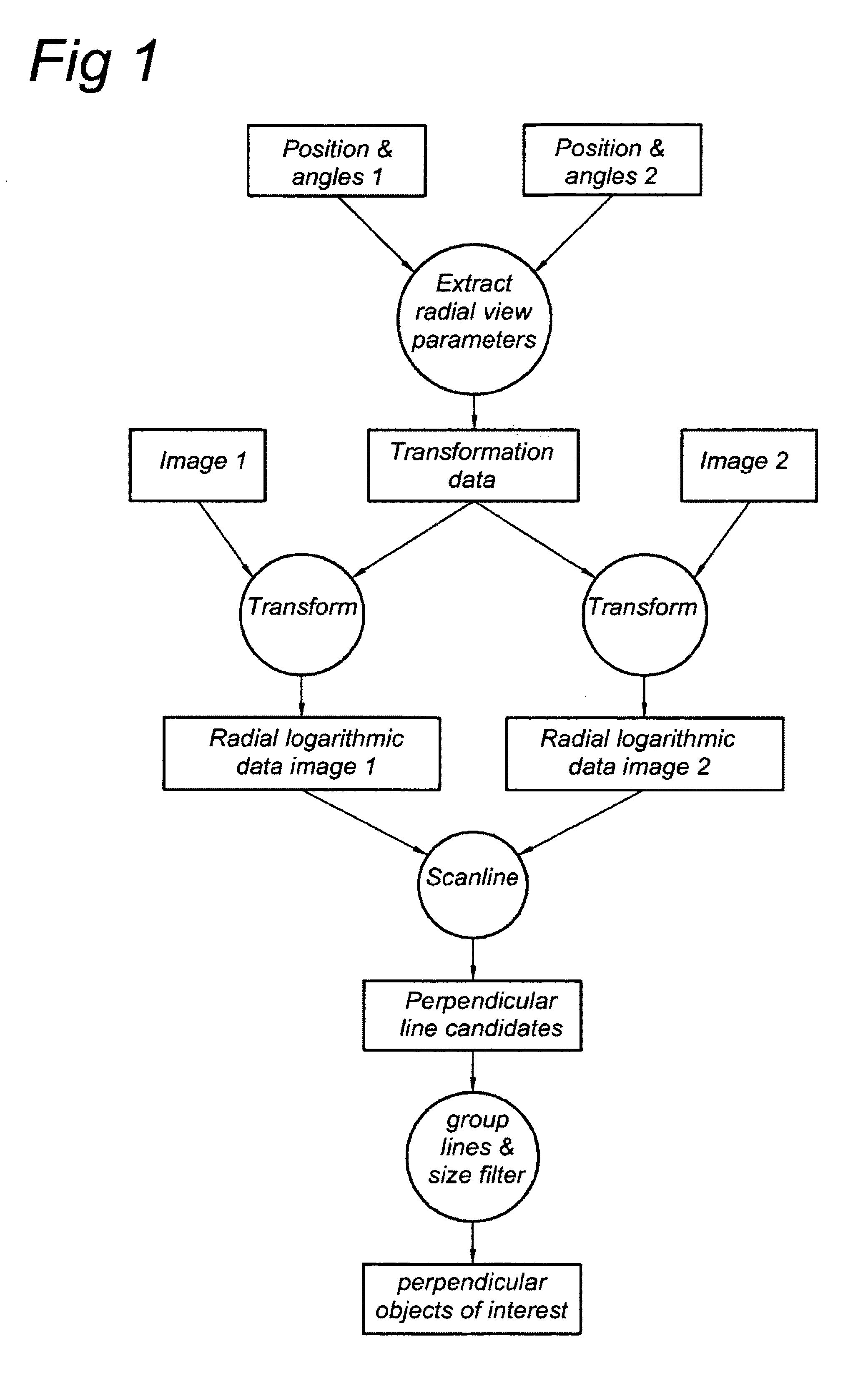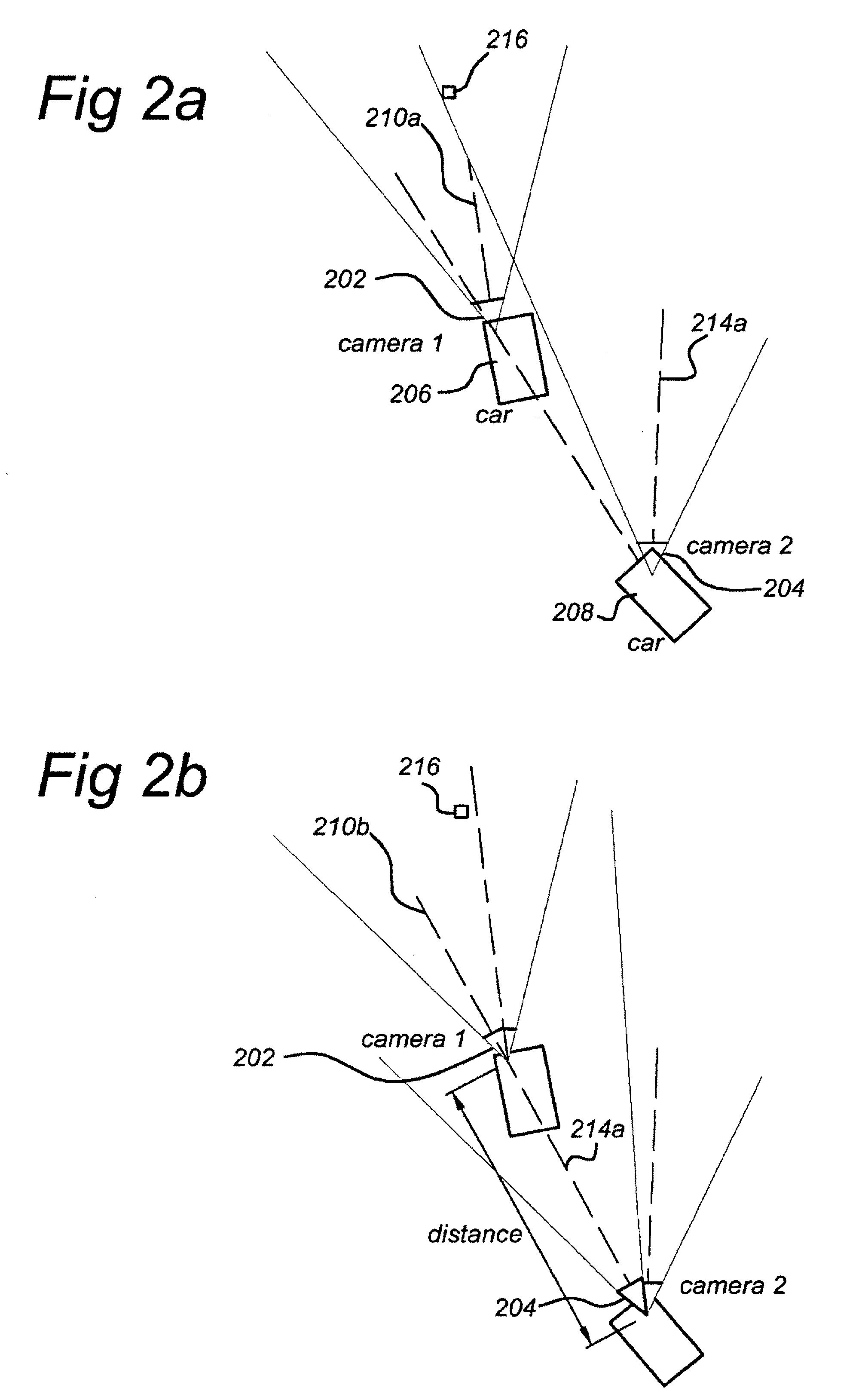Method and apparatus for identification and position determination of planar objects in images
a technology of image and position determination, applied in image data processing, photogrammetry/videogrammetry, instruments, etc., can solve problems such as deformation of objects in image spa
- Summary
- Abstract
- Description
- Claims
- Application Information
AI Technical Summary
Benefits of technology
Problems solved by technology
Method used
Image
Examples
Embodiment Construction
[0082]FIG. 14 shows a MMS system that takes the form of a van 21. The van 21 is provided with one or more cameras 29(i), i=1, 2, 3, . . . I and one or more laser scanners 23(j), j=1, 2, 3, . . . J. The looking angle or the one or more cameras 29(i) can be in any direction with respect to the driving direction of the van 21 and can thus be a front looking camera, a side looking camera or rear looking camera, etc. The viewing window(s) of the camera(s) 29(i) cover(s) the whole road surface in front the vehicle. Preferably, the angle between the driving direction of the van 21 and the looking angle of a camera is within the range of −45 degree −45 degree on either side. The van 21 can be driven by a driver along roads of interest.
[0083]The van 21 is provided with a plurality of wheels 22. Moreover, the van 21 is provided with a high accuracy position determination platform. As shown in FIG. 14, the position determination platform comprises at least some of the following components:
[008...
PUM
 Login to View More
Login to View More Abstract
Description
Claims
Application Information
 Login to View More
Login to View More - R&D
- Intellectual Property
- Life Sciences
- Materials
- Tech Scout
- Unparalleled Data Quality
- Higher Quality Content
- 60% Fewer Hallucinations
Browse by: Latest US Patents, China's latest patents, Technical Efficacy Thesaurus, Application Domain, Technology Topic, Popular Technical Reports.
© 2025 PatSnap. All rights reserved.Legal|Privacy policy|Modern Slavery Act Transparency Statement|Sitemap|About US| Contact US: help@patsnap.com



